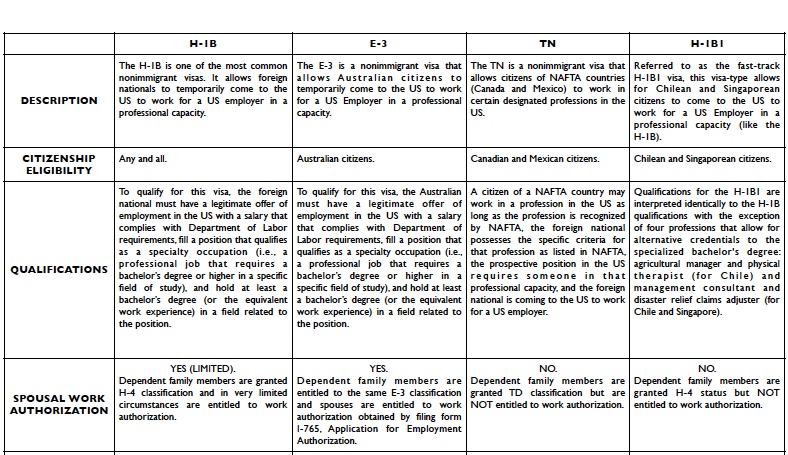Anyone watching the US political debates or the news over the last year probably heard much discussion about NAFTA, the North American Free Trade Agreement, which when enacted into law in 1993 created special economic and trade relationships for the United States, Canada, and Mexico. But not many people realize that NATFA created a special nonimmigrant visa category for Canadians and Mexicans to come to the US to work in professional-level jobs. That nonimmigrant visa is called the TN. The “T” and “N” of TN stands for Trade NAFTA. The TN permits qualified Canadian and Mexican citizens with a job offer from a US employer to seek temporary entry into the United States to engage in professional business activities.
Read moreVisa Options for Graphic Designers and Art/Creative Directors
Everyday life is filled with images—from advertisements in the subway and inside magazines and on billboards to artwork and visual designs on websites, t-shirts, product packaging, book covers, and, okay, pretty much everywhere else. We can thank graphic designers and art and creative directors for using their talents to come up with the overall creative vision and design of all those images we see on a daily basis.
Read moreImmigration and Beignets: Highlights of the AILA Annual Conference June 2017
Last week, I attended my very first American Immigration Lawyers Association (AILA) annual conference. Lucky for me, it was in New Orleans, a city I have long wanted to visit. Protima and I had a great time touring the city, eating delicious food, and, oh yes, learning about immigration law! Being an AILA conference beginner, there was a lot to take in—four full days of panels was both exciting and exhausting. Here are some highlights of the experience.
Read moreVisas for Architects: 5 Common Issues
The world is full of many talented artists—including those who design our public and private spaces. Often these talented artists want to come to the US to work in the numerous architectural firms that do business in the US. So, what visas do architects typically have?
H-1B: Probably the most common visa type for architects is the H-1B specialty occupation visa. As architects will most likely have at the very least a bachelor's degree, an H-1B may be the logical first choice; however, with the numerical limits of this visa type, the H1-B may not be possible.
E-3: Since architects are generally recognized as “specialty occupations” it is likely they will also be eligible for an E-3 visa if they are Australian.
TN: Since “architect” is one of the professions allowed to apply for a TN visa, architects who are nationals of Canada or Mexico could be eligible for this visa category.
Read moreOh to be Australian, Canadian, Mexican, Chilean, or Singaporean
The H-1B is one of the most common visa categories that foreign nationals utilize to come to the United States to work for a US employer in a professional position. The H-1B, however, is limited by Congress at an annual cap each year. Currently there are 65,000 H-1B visas available for those with a bachelor’s degree (or the equivalent) with an extra 20,000 set aside for those with a US master’s degree. Since it’s one of the most popular visa options, it is common for more people to apply than there are numbers available. This has resulted in an annual lottery of H-1B petitions. In previous years, the lottery pool has included petitions submitted on the first five business days the numbers become available (which is April 1st each year). Of course, this often means that unless a foreign national is one of the lucky people to “win” one of the allotted H-1B numbers, she/he must wait and submit a new H-1B petition when the next year’s numbers become available. There are, however, special exemptions to the cap number as well as H-1B-like visa options for certain foreign nationals, namely those whose country of citizenship is Australia, Canada, Mexico, Chile, or Singapore. I examine these exemptions and options in the chart below (click on chart to open in PDF):
Through all the differences between the various visa categories, one thing is certain: it is good to be from a country that allows you options should an H-1B number not be available. In fact, depending on the situation, these may be even better options than the H-1B.

